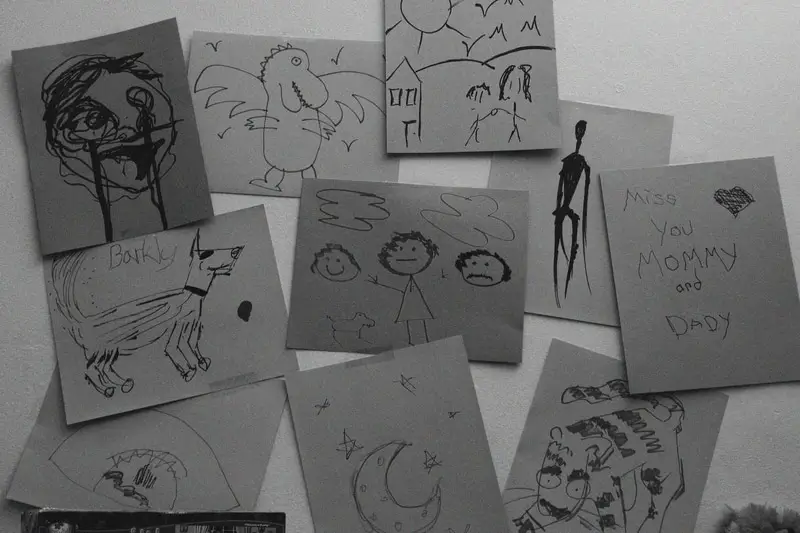After the success of their fantastically transportive The Sideshow, audiences were wondering what CoAct Productions would come up with next. Turns out, CoAct has taken a drastic turn from the whimsical Sideshow to dive into the tricky subject matter of mental illness with their four-part series, The Severance Theory. With the first chapter, Welcome to Respite, launching August 8th, Immersed got the opportunity to sit down with the CoAct team – producer/creative director Lyndsie Scoggin, producer/art director Danielle Levesque, producer/writer/actor Payden Ackerman, co-writer/actor Kelley Pierre – to ask a few burning questions about their newest endeavor.

In your own words, what is The Severance Theory?
SCOGGIN: The Severance Theory is an experiential gateway into the mind of those suffering from Dissociative Identity Disorder (DID). Formerly known as Multiple Personality Disorder, DID is a beguiling psychological phenomenon!
This series is told through the lens of Alex, who is the main character and host of the personality system. While participants will get to experience some of the symptomatic elements of the disorder, this story is so much more about healing than dysfunction. We have discovered that there is something beautiful about how the human mind protects, nurtures, and ultimately heals itself. It’s quite astonishing! That’s the story we want to share with you.

The Sideshow was a beautiful, dreamlike experience. What made CoAct decide to dive into the disturbing psychology of Severance Theory? What are some of your inspirations behind it?
LEVESQUE: I think Payden will have more to say on the subject, but as a group, we have all personally experienced ourselves, or with a loved one, varying types of mental health issues. We considered that it is a touchy subject, but also one that is taboo, and we’d like to explore it in a way that will hopefully draw a new perspective on mental illness. We decided to push ourselves and step out of our comfort zone. We found with The Sideshow that our environment, a 1930s circus, was a real draw for audiences. It’s a glamorous time period and the circus naturally piques most people’s curiosity. With The Severance Theory, we are taking a deep dive into material that is by nature a bit darker, but focusing on exploring the rare psychological phenomenon that will force the audience into a scenario in which they will have to question what is real and what is in your mind. This rare disease piques our curiosity in the same way that the circus did. It’s incredibly complex and wildly difficult to wrap your head around if you don’t experience it firsthand. We hope we can tell a very human story within the strange and emotional backdrop of living with DID.
ACKERMAN: As a creative who suffers from depression, my heart breaks for others who are touched by mental illness. I trust in the power of theater, and immersive theater especially, to raise awareness and empathy. I want audiences to step into the shoes of someone hurting. I want them to experience the peaks and valleys of living with a disorder. I want them to journey through a survivor’s life. I want them to have an experience of being healed. In that way, I see a similarity between The Severance Theory and The Sideshow. In The Sideshow, we saw two characters attempting to heal themselves, and do so through their connection to each other. In The Severance Theory, there is only one character to heal, and it’s your connection that will heal them.

Can you talk to the research you conducted that went into this production?
SCOGGIN: Most of our research has been through listening to the stories of those effected by the disorder. It began earlier this year when I came across some YouTube channels- people living with DID and sharing their experience in that. Each with the goal of diluting the stigma surrounding the mental disorder. After learning about their first-hand experiences, we dug into some medical research to confirm the phenomena that was being claimed (i.e. Alters, Inner Worlds, Switching, Amnesia, etc.). In doing so, we actually did find that there is some controversy within the medical and psychological communities as to whether or not this disorder is even real. However, with the numerous case studies and medical research on DID, it seems to us that the experiences of the disordered are quite valid.
Can you tell us more about the team behind the project?
SCOGGIN: The creative team that we have for this production is made up of such diverse designers, performers, writers, and producers – with many of us wearing multiple shoes! It’s rather hard to sum up our collective experiences. I personally began my career originally by helping companies design escape rooms. I transitioned into immersive theater when I began working as the Creative Producer of Spy Brunch’s Safehouse series and founded CoAct last year where I co-produced and directed The Sideshow. Danielle had built a career designing sets for film and television. Last year, she jumped into the world of immersive theater, and was a huge part of making The Sideshow a success. Payden was a theater professor that “ran away to the circus” after finding immersive theater. Since then, he’s stage-managed The Sideshow and Sampson Creative Enterprises’ Grunge Shop Tavern, and even performed in Spy Brunch’s remount of Safehouse ’77. Kelley’s artistic background is primarily outside of the realm of “immersive,” however she has a wide range of performing arts experience – most recently she was the writer, producer, and performer of HFF2019‘s The Same Room, which is extending its run as part of the “Best of The Broadwater” awards.

The experience is for single participants. Will the guests have any influence on the narrative? How much agency will guests have within the story and experience? What style of immersive experience is it – linear, multi-path, sandbox?
SCOGGIN: Welcome to Respite is a guided and mainly linear experience. However, there are certainly moments of meaningful influence throughout the piece. You may find that your response, both verbal and non-verbal, will influence how the show then reacts to you. We believe that with participant and performer responding authentically to each other and their experience of each other, it will make the memory and relationships feel as if they are really yours.
Can you tell us more about the chosen location?
LEVESQUE: As this is a personal story about Alex, many of the chapters will take place in her childhood home, where most of her memories are made. A small and welcoming bungalow in Los Angeles. A childhood home is a place of comfort and safety for most, but there is always another side to the story, another angle that perhaps the child doesn’t see in the moment, but does upon reflection.

What have been the challenges and biggest rewards so far in crafting the experience?
ACKERMAN: Crafting the experience has been the most challenging and rewarding! How do you create a first-person experience of an utterly complex and layered psychological phenomena? And how do you treat that subject matter with respect, empathy, and keep it theatrically engaging? There’s a sweet spot in there – it’s been a wonderful process hunting for it.
Welcome to Respite is the first chapter of four and the description includes a “charming childhood memory.” Is it safe to say, then, that the other chapters will not be so upbeat?
SCOGGIN: I think any time we go through a period of growth, we have to face some of our demons. The Severance Theory as a whole deals with uncovering Alex’s history, some parts less savory than others, in order to heal.
Will each of the four chapters be solo experiences? Will they be roughly the same length? Are they continuations of the same narrative?
ACKERMAN: The first three chapters of The Severance Theory are 30-minute solo experiences. Audience members step into the shoes of someone suffering from DID, and revisit past events that contributed to the disorder. We like to think each of these memories holds a key, and as audience members progress through the narrative, they are prepared to unlock the fourth chapter: a larger event that will serve as the climax of our narrative. The finale is the culmination of everything that comes before, but we are also designing these experiences to stand on their own.
What are you most excited for guests to experience within The Severance Theory as a whole? Welcome to Respite?
SCOGGIN: For the series as a whole, I am most excited for the participants to navigate the relationships of the personalities within the DID System. It is certainly one of the things I find most interesting about this disorder, and just like any relationship, things are never perfect. Each of them are unique, play an important role, and work together to get to a place of healing. It’s really very astonishing.
For Welcome to Respite in particular, I’m looking forward to audiences experiencing something that feels equally nostalgic and supernatural. This episode really focuses on how Alex connects with both the world around them and, because of the disorder, their own mind.
What do you want guests to leave feeling?
ACKERMAN: My hope is that participants will take away the experience of being healed. We all hurt. We all need help. We all deserve empathy. I believe we can offer that experience to participants, and still have a production that thrills, delights, and entices.
Find more information on CoAct Productions on their website and Facebook page. Purchase tickets to Welcome to Respite here, and check out our Event Guide for more immersive theater throughout the year.








